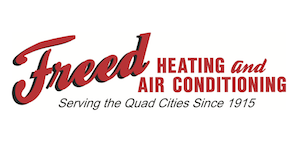
A furnace is almost always a background player at home, ensuring you're warm during the cold winter months. It regularly isn't noticed until a malfunction appears.
One root cause could be that your furnace has a cracked heat exchanger. It can be a safety risk, so it’s worthwhile to learn the symptoms of a cracked heat exchanger and what you should do if you believe that may be the problem.
What Is a Heat Exchanger in a Furnace?
A heat exchanger helps move heat from the combustion chamber in your furnace to the air that moves through the ventilation. It usually handles this using coils or tubes that heat up the air while functioning as a barrier to keep the gasses produced in the combustion chamber, called flue gasses, from getting out into your home.
Is a Cracked Heat Exchanger Dangerous?
Because of its important role, it shouldn't come as a surprise that a cracked heat exchanger can be hazardous. Cracks in the heat exchanger can permit dangerous gasses – like carbon monoxide, which can be lethal – to circulate throughout your home.
For this reason, don't ever use your furnace if you suspect you're dealing with a cracked heat exchanger, as letting it run could make your entire household ill. Reach out to an HVAC professional as soon as possible if you are worried your heater has a cracked heat exchanger that needs to be repaired.
Four Signs of a Cracked Heat Exchanger:
- Furnace shuts off: A cracked heat exchanger can cause your furnace to switch off.
- Strange Smells: If the air coming out of your furnace has a powerful chemical odor, it might be evidence gas is seeping through cracks in your heat exchanger. These gasses, which may smell like formaldehyde, are a common warning sign.
- Carbon monoxide alarm initiates or you notice symptoms of poisoning: If a cracked heat exchanger is releasing carbon monoxide into your home, your carbon monoxide alarm should go off or household members could start experiencing signs of carbon monoxide poisoning. Side effects include headaches, dizziness, weakness, nausea, vomiting or feeling drowsy. If the alarm goes off or you feel unusually tired, get out of the home as soon as you can and then call for help.
- Soot: If you spot black sooty collecting near the exterior of your furnace, it’s an indication something may be seriously wrong.
What You Can Do if Your Furnace Heat Exchanger is Cracked
If you worry your furnace has a cracked heat exchanger, call a professional with extensive experience in furnace installation Moline right away so they can examine your system and, if necessary, perform a furnace heat exchanger replacement. Costs should fluctuate depending on the situation, but estimates can roughly suggest $1,000 to $3,000.
Fortunately, the good news is that heat exchangers are regularly covered by the warranty. You’ll want to check the warranty paperwork on your furnace, since while the warranty won't always cover the entire cost of repairs, it still may significantly lower your bill.
How to Prevent a Cracked Heat Exchanger in Your Home
One of the easiest ways to minimize the risk of problems in your furnace overall is with routine furnace maintenance. Furnaces offer the most benefits when they operate efficiently. Contacting a skilled professional to examine your furnace for broken-down parts, clogs in the air filters and other likely problems can help you avoid getting a big bill later on.
It’s also beneficial to review your furnace filters every few months – it’s encouraged some filters be swapped out every 90 days or sooner if they are dirty or grimy. While the filters are not part of the heat exchanger itself, the strain of dragging air through a clogged filter makes your entire furnace work longer to accomplish its job. And the harder your furnace needs to run, the more strain parts like the heat exchanger will experience.
